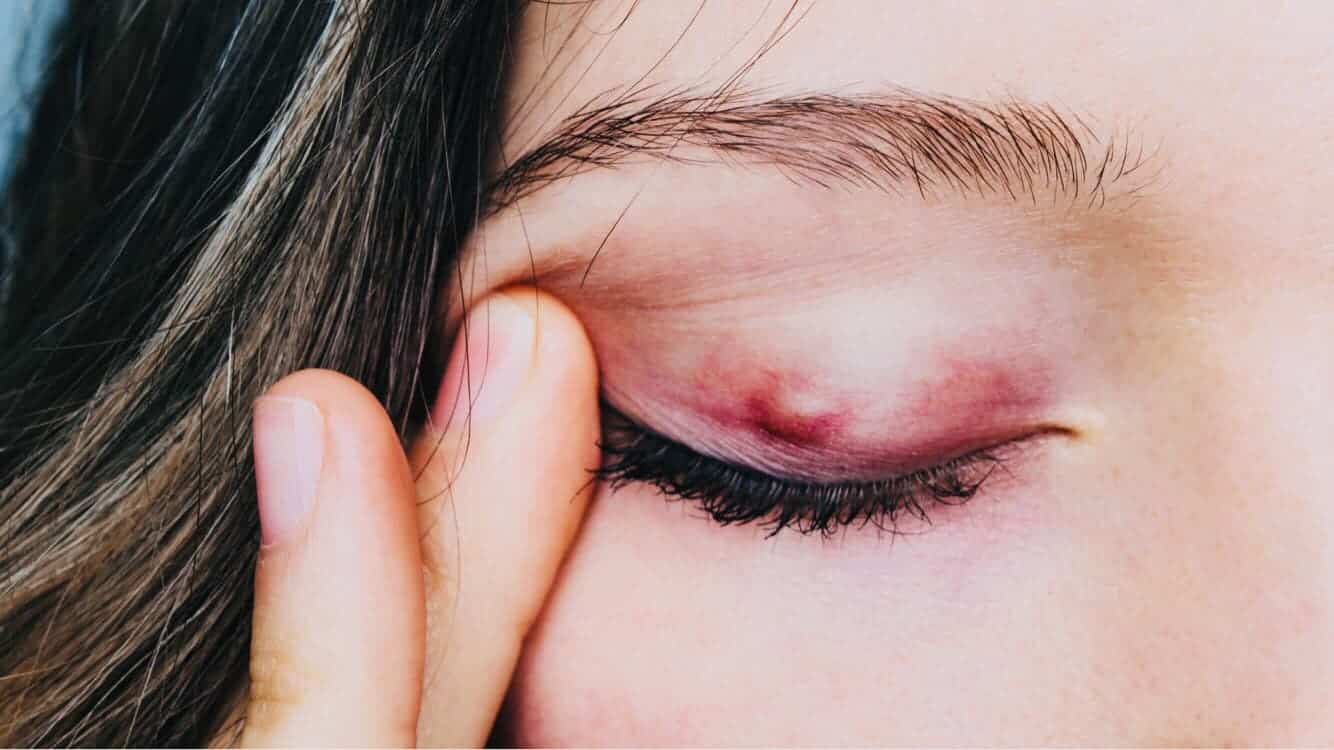Despite being really unpleasant to deal with, barley eye – more commonly known as a stye – is extremely uncomfortable. Having barley eye feels like having a pimple right on the edge of your eyelid. And like any mark or skin condition that appears on your face, it’s hard to hide, so getting it can be unpleasant. However, the one positive thing about barley eye is that it’s not dangerous to your eyesight at all.
It normally goes away on its own within a few weeks – and you can speed up the process with some homemade treatments – but it can be quite painful as it heals. The most important thing is not to try and burst the little pocket of pus in the “barley,” as that can cause a bad infection. It’s also important to catch barley eye early.
Here Are Eight Symptoms That Reveal You May Have Barley Eye
1. A lump on the top or bottom eyelid
A lump is the most common symptom of barley eye. But there are different kinds of lumps: some are more localized, like a pimple, while others can be spread out. If you have a spread-out lump or swelling, you might be dealing with something else like chalazia, which is a different type of eye infection. If there’s a small dot of pus that you can see in the mirror, it’s most likely a barley eye infection.
2. Crusty eyes
You know that feeling when you wake up and your eyes feel kind of scrunchy and unpleasant? Because it’s an infection of the secretion glands in your eye, barley eye can cause this symptom. Make sure to keep your eyes clean and avoid wearing contacts or eye make up until the stye has healed.
3. Droopy eyelids
The swelling of the eyelid that causes a stye can make it feel very heavy, especially if it’s a big stye. Even if you can’t feel swelling on the outside yet, a droopy eye may be a sign that you’re about to get barley eye.
4. Redness
Redness is another common symptom of other eye diseases, so you have to be discerning, but barley eye is red and painful. If your eye is red and uncomfortable but not as painful, you may be dealing with conjunctivitis instead. Either way, as tempting as it is, make sure not to cover up the redness in eye makeup, as that can hinder the healing process.
5. Tenderness to touch
Normally, the area around the stye will be tender and painful to touch until the small pocket of pus bursts naturally. Experts recommend not touching the area at all because it might spread the infection, and to not use contact lenses until the stye is fully healed.
6. A scratchy, itchy feeling on the eyeball
Barley eye can cause itchiness and scratchiness because it’s often related to dehydration of the eye as well. (This might also be a sign that the infection from the barley eye is spreading.) Make sure to keep the spot clean and wash it every night with warm water to prevent that from happening.
7. A feeling that you have something in your eye
This is, in fact, one of the first symptoms of barley eye that people notice. It’s often why the infection has a chance to spread, because of the repeated attempts you make to get something out of your eye. If you have the feeling of an eyelash or another foreign object in your eye, make sure to examine your eyelids for any swelling, as you may be dealing with barley eye instead.
8. Blurred vision
This is one of the rarer symptoms of barley eye, but it can happen with some severe cases. If the infection spreads more, or if the droopiness in your eye increases, it may cause blurred vision and other problems seeing. It still doesn’t mean that your eyesight is in danger, but if the feeling persists, make sure to see a doctor.
Final thoughts
These are just a few of the symptoms related to barley eye. There are several things you can do to prevent yourself from getting the infection. As it’s a contagious condition, make sure not to share towels with anyone who does have barley eye. Also, if you use contact lenses, always wash your hands before you put them on or take them off.
Barley eye infection can be caused by the slightest decrease in personal hygiene, so make sure to stay on top of it to avoid this painful inconvenience. Thankfully, styes go away on their own after a few weeks. But if the swelling gets worse, don’t be afraid to look for a doctor’s opinion, too.


















